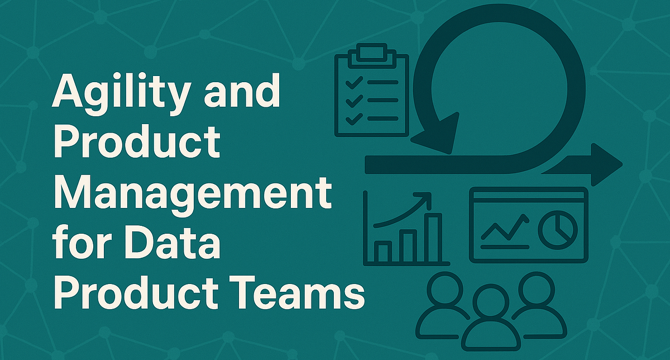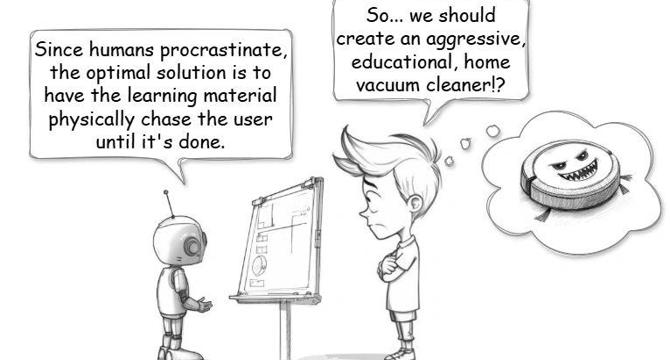Product Management News
Medium
195

Image Credit: Medium
Composable Task Execution Graphs (CTEG): A New Foundation for Agentic Execution
- Composable Task Execution Graph (CTEG) is a task orchestration system structured as a directed acyclic graph (DAG) that models project execution plans.
- Nodes in CTEG represent tasks categorized into four types, with edges encoding dependencies and weights indicating cost, time, and risk.
- CTEG involves recursive decomposition of nodes triggering sub-CTEG expansion, facilitating project completion through modular task breakdown and execution.
- CTEG serves as a bridge between strategy and execution, offering efficient automated task execution, decision path navigation, and adaptive cognition for AI-human systems.
Read Full Article
11 Likes
Medium
195

Image Credit: Medium
Navigating Agility in Data Product Management: A Blueprint for High-Impact Teams
- Sophisticated organizations are rethinking how they apply agile methodologies in the context of data product management, focusing on transparency, learning, and shared accountability.
- Agility in data product management involves making dynamic trade-offs while maintaining the product vision, such as balancing model complexity and explainability.
- Skilled data product managers play a crucial role in bridging business needs with technical capabilities, fostering an environment conducive to experimentation and collaborative backlog refinement.
- Embracing progressive validation, continuous exploration, and outcome-based goals are key strategies for data product teams to achieve agility as a strategic differentiator rather than just a tactical advantage.
Read Full Article
11 Likes
Medium
154

How to Stand Out in a Product Marketing Manager Interview
- Product Marketing Manager (PMM) interviews focus on strategy, customer insight, and cross-functional leadership.
- Core criteria for PMM evaluation include articulating target audience, creating GTM strategies, conveying customer insights effectively, collaborating across various departments, and measuring impact.
- Prepare for PMM interviews by studying product pages, case studies, and launch videos to understand the target audience and differentiate the product.
- During the interview, emphasize past product launches, storytelling structure, messaging rooted in insights, collaboration with stakeholders, measurable outcomes, and using similar language as the company to showcase fit.
Read Full Article
9 Likes
Medium
281

Image Credit: Medium
How to Master the Product Sense Interview (Even If You’re Not a PM)
- Product sense involves empathizing with users, identifying problems, proposing solutions, and understanding business value.
- Approach product sense interviews with structured thinking and customer empathy, focusing on defining the user, their goal, and the friction they face.
- When tackling product sense questions, demonstrate judgment by evaluating ideas based on effort, impact, feasibility, and business value.
- Key elements for mastering product sense include clear problem definition, empathy for users, logical decision-making, awareness of trade-offs, and understanding metrics and outcomes.
Read Full Article
16 Likes
Discover more
- Programming News
- Software News
- Web Design
- Devops News
- Open Source News
- Databases
- Cloud News
- Operating Systems News
- Agile Methodology News
- Computer Engineering
- Startup News
- Cryptocurrency News
- Technology News
- Blockchain News
- Data Science News
- AR News
- Apple News
- Cyber Security News
- Leadership News
- Gaming News
- Automobiles News
Medium
159

The Role of Design Thinking in Successful Product Innovation
- Design thinking is a problem-solving strategy focused on empathy, creativity, and exploration to develop innovative solutions by understanding real user needs.
- It helps companies avoid big mistakes by incorporating real user feedback through rapid prototyping and testing, reducing the risk of failure and increasing market success.
- Design thinking promotes collaboration among various departments, like designers, engineers, and marketers, fostering diverse perspectives and creating balanced, user-friendly products.
- This approach supports continuous improvement by encouraging ongoing learning and updates based on user feedback, enabling companies to adapt to changing market needs and remain competitive.
Read Full Article
9 Likes
Medium
81

How to Prepare for the Behavioral Interview in Any Product Role
- Behavioral interviews are crucial for understanding how you work and fit into product roles.
- Structuring your answers well and aligning them with the employer's values is key.
- Before the interview, research what matters to the company and tailor your answers accordingly.
- Focus on themes like leading without authority, handling conflict, collaboration, learning from failure, and driving results with clear storytelling.
Read Full Article
4 Likes
Medium
445

Image Credit: Medium
Curated Style Drops: Vintage, Y2K, & Streetwear Finds from Cultureflips
- Cultureflips curates vintage, Y2K, and streetwear finds focusing on quality, style relevance, and buyer appeal.
- They offer a range of items including Nike performance shirts, Rock Rebel tees, New Balance, Adidas gymwear, and REI outdoor fleeces, alongside vintage ties and polos.
- Each piece is detailed with measurements, SEO descriptions, and ensures fast shipping to cater to buyers' needs for quality and efficiency.
- Cultureflips guarantees current trend pieces, fast shipping, quality checks, and a selection of top favorites like Nike Dri-FIT T-Shirts and REI Full-Zip Polartec Fleece Jackets.
Read Full Article
26 Likes
Medium
104

How to Nail the “Tell Me About Yourself” Question in Any Product Interview
- The 'Tell Me About Yourself' question is crucial in product interviews and sets the tone for the conversation.
- Start with a strong, clear, and confident opening to leave a lasting impression.
- Highlight your strengths, guide the narrative, and build credibility quickly.
- Craft a compelling answer by summarizing your focus, showcasing your track record, and closing with intention and curiosity.
Read Full Article
6 Likes
Medium
15
Image Credit: Medium
Redefining Delivery: Why Traditional Project Management Doesn’t Work in AI Programs
- Traditional project management tools work well for ERP deployments, CRM rollouts, and cloud migrations but not for GenAI projects which require rapid learning, experimentation, and adaptation.
- GenAI projects involve coaching AI to communicate like a human, solve real problems, and require a different mindset from traditional project management.
- Conventional delivery models don't hold up for GenAI projects as everything is in motion, leading to the need for structured flexibility and iterative approaches.
- Leading in the AI era requires new skills such as managing ambiguity, curiosity, patience, empathy, and setting up teams for experimental delivery success.
Read Full Article
Like
Logrocket
77

Image Credit: Logrocket
Leader Spotlight: The components of a good feature brief, with Monique Piras
- Monique Piras, Senior Director of Product Management at Ironclad, leads the core platform team across various areas.
- She emphasizes the importance of collaboration and involving engineers and designers early in the product development process.
- Effective communication with all stakeholders is a key focus for maintaining alignment and driving successful outcomes.
- Monique stresses the significance of level-setting and mutual respect among team members with diverse backgrounds.
- She emphasizes the role of product excellence playbooks in breaking down responsibilities for the triad.
- Monique discusses re-imagining feature briefs to separate high-level summaries from detailed product requirements.
- Feature briefs at Ironclad include observations, customer impacts, guiding principles, and success metrics.
- Monique coaches PMs on addressing persona details, user narratives, and validation with customers early in the product development process.
- She advocates for collaborative reviews of feature briefs to gather insights and avoid working in isolation across different functions.
- As teams scale, Monique emphasizes evolving the depth of feature briefs through collaboration, discovery work, and alignment.
Read Full Article
4 Likes
Medium
59

Image Credit: Medium
The Last Developer: Why Your API Documentation Strategy is Already Obsolete
- AI agents are increasingly able to integrate with APIs without the need for documentation or human intervention, as demonstrated by Replit's AI Agent.
- OpenAI announced support for Model Context Protocol (MCP) across their products, signaling a significant shift in technology integration.
- API documentation has become more critical in the last five years, with nearly 80% of respondents emphasizing its importance, according to the State of Docs Report.
- The future of API development will prioritize designing endpoints for AI systems, implementing machine-readable descriptions, and focusing on agent experience over traditional developer experience.
Read Full Article
3 Likes
Medium
218

Image Credit: Medium
Six Features in Search of a Customer: The Theatre of Product Absurdity
- Successful product leaders distinguish themselves by their ability to prioritize building roadmaps that lead to easily marketable and sellable products, rather than getting caught up in superfluous features.
- Research indicates that stakeholder misalignment often stems from inadequate quality requirements and a lack of questioning management decisions in the product roadmap alignment process.
- Harvard Business School studies show that approaching product development with strict cost-control measures can backfire, highlighting the importance of better listening and understanding customer needs.
- Product teams should focus on solving real customer problems, watching user behaviors, and ensuring roadmaps are based on actual market insights, rather than trying to rationalize irrelevant features.
- Strong product leaders act as directors, synthesizing data and ensuring alignment among team members to build products customers are willing to pay for.
- Prioritize features based on unit economics, development costs, and resource constraints, and incorporate market validation and competitive analysis to guide product development.
- Listen to go-to-market teams for valuable insights but maintain control over roadmaps to ensure alignment with strategic objectives and customer needs.
- Clearly define success metrics upfront, validate assumptions with evidence, and be willing to discontinue features that do not meet business value criteria, preventing unnecessary feature sprawl.
- The article emphasizes the importance of preventing product development from spiraling into complexity by continuously aligning projects with strategic goals and focusing on customer impact over innovation.
- It juxtaposes the evolution of a simple solution into a complex, unwieldy product with Kafka-esque attributes, illustrating the dangers of losing sight of the original customer problem.
- Product development should prioritize solving real customer problems efficiently over creating elaborate, unnecessary features, ensuring that products remain practical and valuable to the target audience.
Read Full Article
13 Likes
Medium
22

Image Credit: Medium
Starting my Startup!
- A mechanical engineering student took on the challenge of building an app after being constantly engaged in building physical products and art.
- Inspired by the love for giving and receiving opinions, the student created an app named Raay, which means "opinion" in Urdu.
- After conducting market research and learning app development, Raay was launched in April 2025 and gained over 100 users from 10 countries within a week.
- The experience of building the app provided insights into app development, product management, and entrepreneurship, emphasizing the importance of dedication and accepting imperfections.
Read Full Article
1 Like
Medium
404

Image Credit: Medium
Build a product with Gen AI as your partner: 3-SolutionGeneration
- In part 3 of the series, Gen AI used innovative solutions to address the customer problem hypothesis identified in part 1 and the promising market attributes discovered in part 2.
- The Innovator GPT provided various product ideas, some meeting constraints like being cheap and simple, and others being more unconventional such as creating scary escape room challenges for training.
- A study was conducted to gauge the creativity of the ideas generated by Gen AI, showing that they were seen as moderately creative by participants matching the target customer persona.
- The results indicated an average creativity score of 2.13 on a 3-point scale, with the AI producing applicable and novel ideas that the human participants found to be somewhat creative.
- Despite some challenges in the summarization process, the use of Gen AI proved valuable in generating business ideas and providing insights for decision-making.
- Moving forward, the series will continue to develop and refine a combined solution based on the top-ranked idea, supported by the analysis and input from Gen AI.
- The study involved 12 participants, with efforts made to match the demographic of technical project, program, and product managers.
- Randomization of ideas for participants and considerations for reducing Y-axis labels in visualizations were highlighted as areas for improvement in future studies utilizing AI assistance.
- The upcoming articles in the series will focus on creating a business plan leveraging insights from the preceding parts, demonstrating the practical applications of using AI in product development.
- Overall, Gen AI showcased its capacity to generate creative solutions, providing valuable inputs for innovation and decision-making processes.
- The series aims to continue exploring the potential of AI collaboration in product development and business planning, highlighting the benefits and challenges of integrating AI tools.
Read Full Article
24 Likes
Medium
140

Image Credit: Medium
The Partnership Matrix: How Humans and AI Can Work Together
- The article discusses the importance of creating intentional partnerships between humans and AI to leverage both human judgment and machine capabilities effectively.
- The focus is on defining the right working relationship between humans and AI to optimize decision-making and enhance critical thinking.
- It introduces a Partnership Matrix that categorizes decision types into Automation, Augmentation, Exploration, and Command zones based on stakes and uncertainty.
- The article emphasizes the need for organizations to understand that most jobs in the future will likely involve partnerships between humans and AI.
- AI lacks human context, accumulated judgment, and implicit knowledge, making it crucial for humans to be part of all AI decision-making processes.
- Context preservation is essential as AI processes data efficiently but may miss the meaning crucial for decision-making, leading to potential issues like eroding customer trust.
- The framework suggests optimizing different aspects for each zone, such as efficiency, expanded thinking, understanding problem spaces, and judgment quality.
- Leadership in the age of AI involves designing environments that support sound decision-making and understanding how to create partnerships where human creativity and AI's analytical power reinforce each other.
- The article stresses the importance of accountability in decision-making and highlights the significance of creating partnerships that amplify both human and machine strengths for successful outcomes.
- Leaders are encouraged to orchestrate partnerships between human and machine intelligence to maximize their respective strengths and work towards outcomes unachievable alone.
- Ultimately, the focus is on collaborative decision-making between humans and AI, emphasizing the potential for creating efficient and effective organizations through thoughtful partnerships.
Read Full Article
8 Likes
For uninterrupted reading, download the app